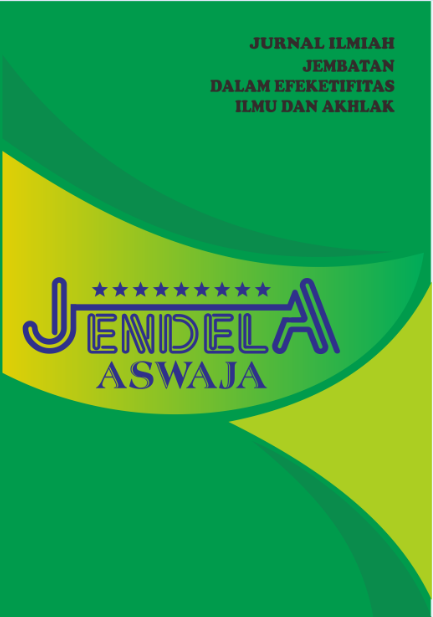Contribution of Fish Species to Production Value and Its Implications for Fisheries Marketing Strategies in the Java Sea (Case Study at Muara Angke PPN)
DOI:
https://doi.org/10.52188/jeas.v6i3.1468Keywords:
fish contribution, production value, marketing strategy, drift gillnet, PPN Muara Angke, Java Sea.Abstract
The fisheries sector plays a crucial role in supporting food security and coastal economies, particularly in high-intensity fishing areas such as Muara Angke. Drift gillnets are among the dominant fishing gears in the Java Sea, contributing significantly to landings at Muara Angke Fishing Port (PPN Muara Angke). However, the contribution of each fish species to production value and its implications for marketing strategies remain underexplored.This study aims to analyze the contribution of fish species to production value and to identify implications for fisheries marketing strategies in the Java Sea, using secondary data from drift gillnet landings at PPN Muara Angke in 2025. The analysis was conducted by calculating the production volume and value of each species and relating them to market demand and processing potential.The results show that the total drift gillnet production in 2025 reached 35,000 tons, with the largest contributions from skipjack tuna (35.7%), mackerel scad (26.3%), and narrow-barred Spanish mackerel (13.7%). Together, these three species accounted for more than 75% of the total production. The dominance of small to medium pelagic species highlights their economic importance, both for direct consumption and as raw materials for processing industries such as canning, smoking, and freezing. Other species, including scad, round scad, and mixed catches, contributed less but remain essential for catch diversity and local market supply. Marketing strategies should prioritize supply chain strengthening, post-harvest quality improvement, and product diversification for skipjack tuna, mackerel scad, and Spanish mackerel. Meanwhile, minor species can be developed through product differentiation and local marketing to reduce dependency on a few dominant commodities.
References
Ardy, A., dan Sari, N. P. (2020). Analisis kontribusi perikanan tangkap terhadap pendapatan nelayan di pesisir utara Jawa. Jurnal Sosial Ekonomi Kelautan dan Perikanan, 15(2), 145–156. https://doi.org/10.15578/jsekp.v15i2.9301.
Darmawan, B., Santoso, R., dan Lestari, A. (2020). Product Differentiation Strategy of Capture Fisheries based on Market Segmentation In Indonesia. Journal of Marine Policy, 120, 104-152. https://doi.org/10.1016/j.marpol.2020.104152.
Firmansyah, M., Yulianto, I., dan Prasetyo, D. (2020). External factors affecting sustainability of capture fisheries in Java Sea. IOP Conference Series: Earth and Environmental Science, 414(1), 012010. https://doi.org/10.1088/1755-1315/414/1/012010.
Khairisa, A., dan Pertiwi, N. (2023). Market dynamics and price fluctuations of small pelagic fish in Indonesia. Journal of AACL Bioflux, 16 (5), 2831–2842. https://www.bioflux.com.ro/docs/2023.2831-2842.
Nasution, A. R., dan Sihaloho, R. (2019). Analisis penggunaan alat tangkap jaring insang di perairan pantai utara Jawa. Jurnal Teknologi Perikanan dan Kelautan, 10 (1), 45–56. https://doi.org/10.29244/jtpk.10.1.45-56.
Nurdin, E., Hidayat, M., dan Salim, M. (2020). Ecosystem-based approach in sustainable gillnet fisheries management. Egyptian Journal of Aquatic Biology and Fisheries, 24 (5), 573–585. https://doi.org/10.21608/ejabf.2020.118921.
Nurazizah, S., Suherman, A., dan Fitri, N. (2024). Optimization of fish landing port facilities: A case study at Muara Angke Fishing Port, Jakarta. Aquaculture, Aquarium, Conservation and Legislation, 17 (2), 812–821. https://www.bioflux.com.ro/docs/2024.812-821.
Putra, H. S., dan Pamungkas, W. (2022). Price and volume competition among capture fisheries commodities in Java Sea fish markets. Regional Studies in Marine Science, 55, 102-628. https://doi.org/10.1016/j.rsma.2022.102628.
Putra, R. A., Sari, D., dan Nugroho, T. (2021). Strengthening competitiveness of Indonesian fisheries products in global markets. Marine Resource Economics, 36 (4), 355–372. https://doi.org/10.1086/714498.
Rahmawati, I., dan Yusuf, M. (2020). Pemasaran hasil perikanan tangkap di pelabuhan perikanan: Studi kasus Muara Angke. Jurnal Perikanan dan Kelautan, 25(3), 175–186. https://doi.org/10.22146/jpk.2020.56342.
Rizky, D., Fathurahman, H., dan Rahmawati, L. (2020). Role of Muara Angke Fishing Port in supplying fish consumption in Jabodetabek. Jurnal Sosial Ekonomi Kelautan dan Perikanan, 15 (2), 177–188. https://doi.org/10.15578/jsekp.v15i2.8842.
Sasmita, R., Wicaksono, A., dan Rini, D. (2024). Seasonal variability of small pelagic fish landings by purse seine in the northern coast of Java. Fisheries Research, 272, 106-184. https://doi.org/10.1016/j.fishres.2023.106184.
Simbolon, D., Kusyairi, A., dan Saraswati, D. (2025). Catch composition and marketing implications of squid (Loligo spp.) in the Java Sea. Aquaculture and Fisheries, 10 (3), 287–296. https://doi.org/10.1016/j.aaf.2024.12.008.
Suherman, A., Hidayati, I., dan Ramadhan, F. (2019). SWOT-based marketing strategy for capture fisheries in coastal areas. Asian Journal of Fisheries and Aquatic Research, 3 (3), 1–12. https://doi.org/10.9734/ajfar/2019/v3i330037.
Syahputra, A., dan Firdaus, M. (2021). Quantitative contribution analysis in determining leading fishery commodities. Jurnal Sosial Ekonomi Kelautan dan Perikanan, 16 (2), 131–143. https://doi.org/10.15578/jsekp.v16i2.9576.
Syamsuddin, S., Asriani, A., dan Muttaqin, M. (2021). Dominance of fishery commodities and domestic market preferences in Indonesia. Aquaculture, Aquarium, Conservation and Legislation, 14 (4), 2123–2132. https://www.bioflux.com.ro/docs/2021.2123-2132.
Utami, D., Wahyuni, T., dan Siregar, R. (2020). Descriptive quantitative method in analyzing economic value of capture fisheries. Jurnal Ilmiah Perikanan dan Kelautan, 12 (1), 25–34. https://doi.org/10.20473/jipk.v12i1.15628.
Wijaya Putra, A., dan Ediyanto, D. (2022). Marketing networks of small pelagic fish at Muara Angke Fish Auction. Journal of Marine Policy, 137, 104947. https://doi.org/10.1016/j.marpol.2021.104947.
Wijayanto, D., Zulkarnain, A., dan Putri, A. (2021). Fishing effort management and eco-friendly technology for sustainable fisheries in the Java Sea. Journal of Egyptian Aquatic Biology and Fisheries, 25 (2), 177–190. https://doi.org/10.21608/ejabf.2021.168079.
Wulanda, R., Pratiwi, R., dan Zainuddin, M. (2023). Secondary data analysis in capture fisheries: Contribution of species to economic value. Journal of AACL Bioflux, 16 (1), 122–134. https://www.bioflux.com.ro/docs/2023.122-134.
Zulbainarni, N., Fadli, N., dan Sari, R. (2017). Economic contribution of small pelagic fish to coastal communities in Indonesia. Jurnal Sosial Ekonomi Kelautan dan Perikanan, 12(2), 201–212. https://doi.org/10.15578/jsekp.v12i2.6606.






